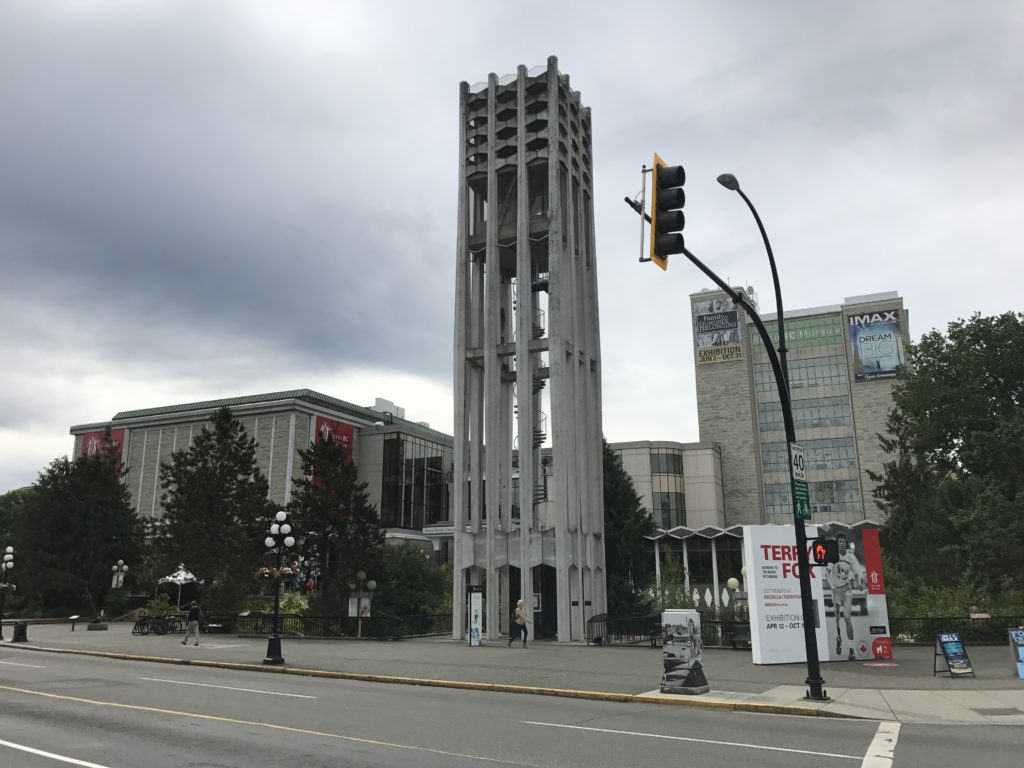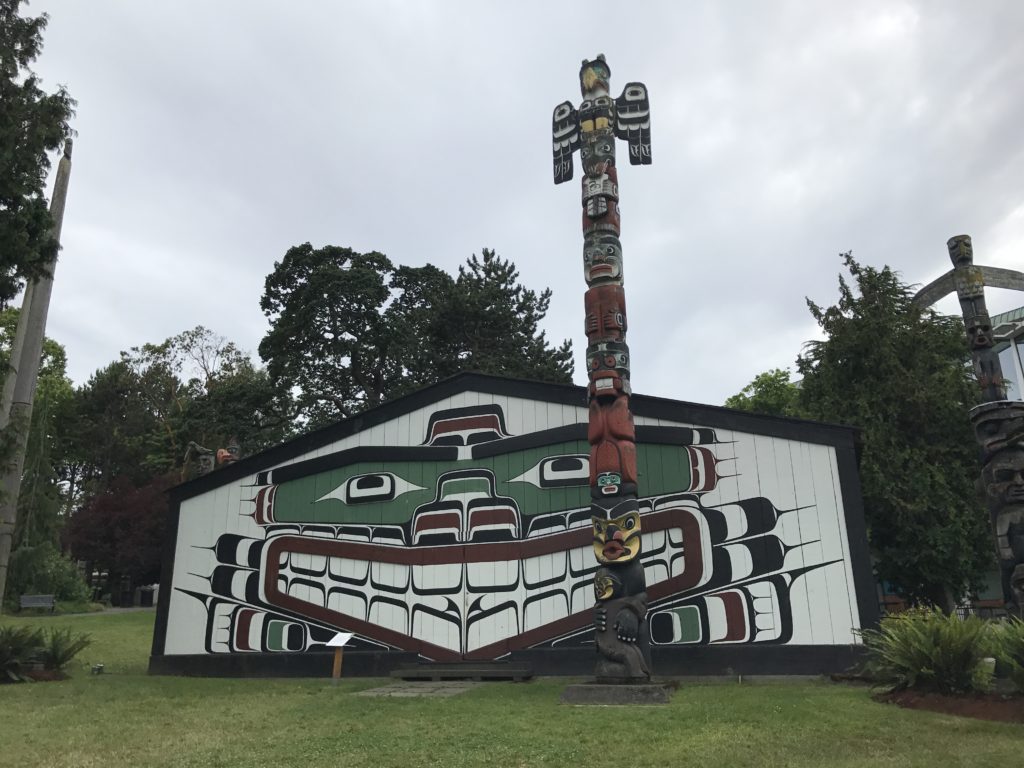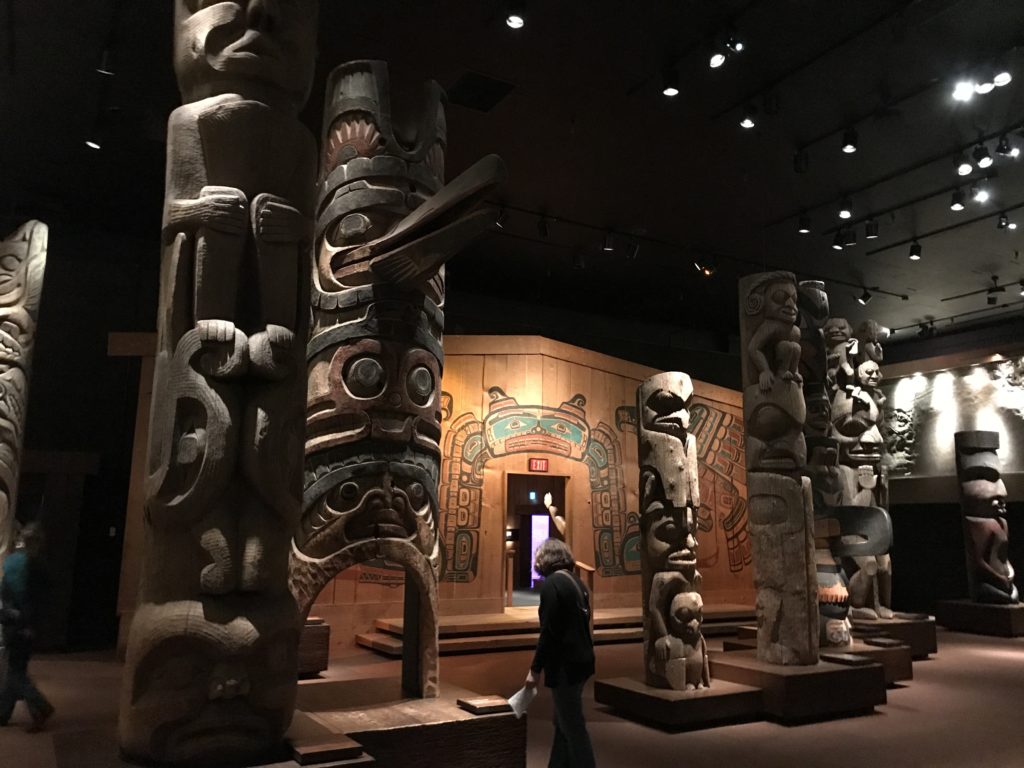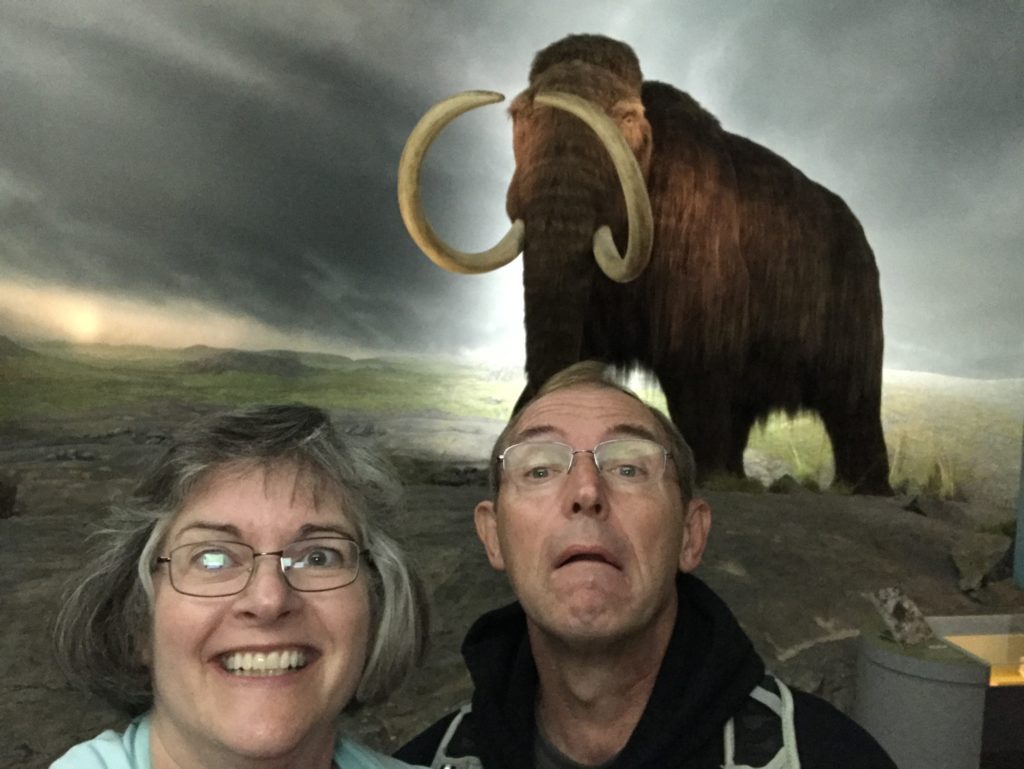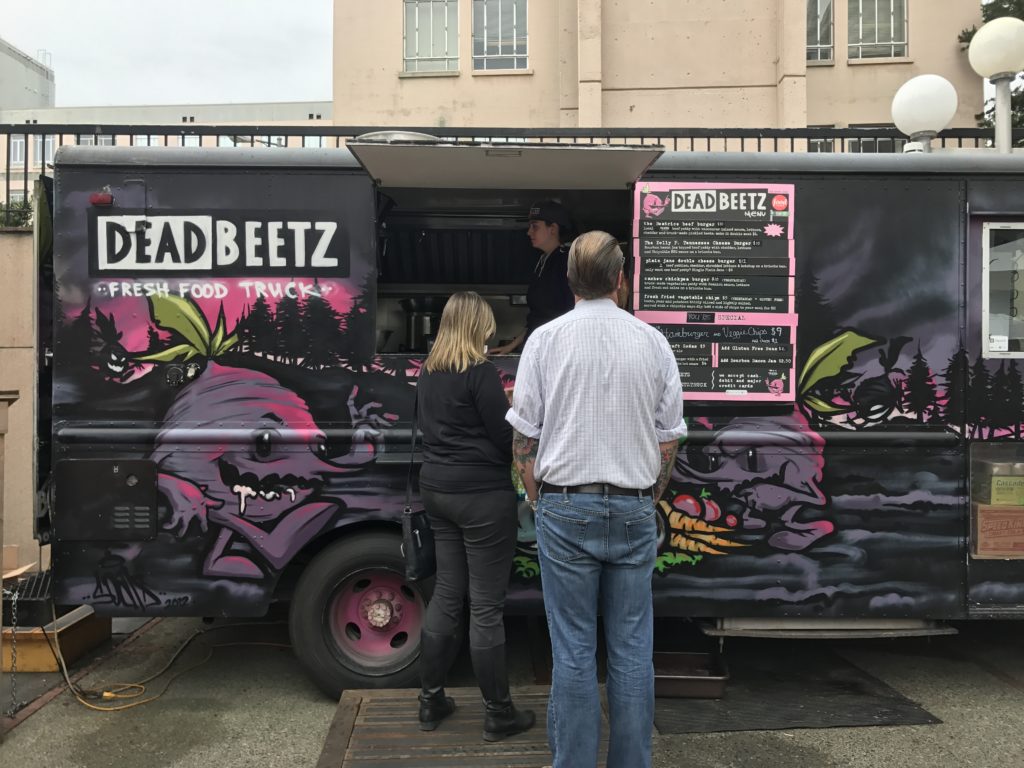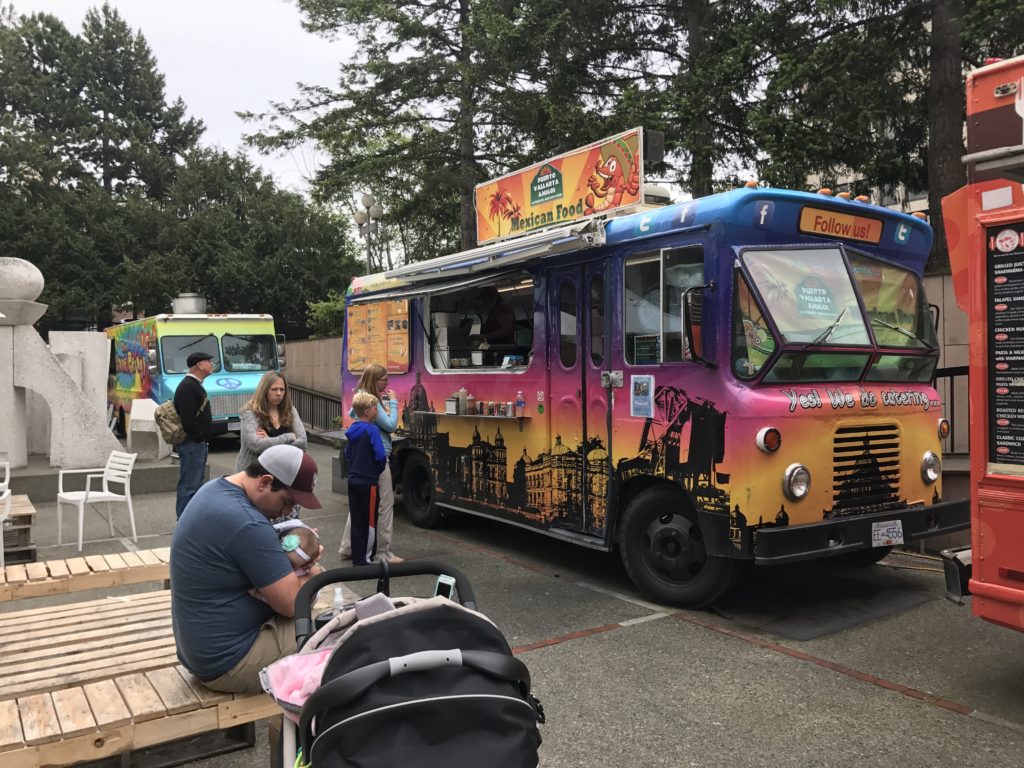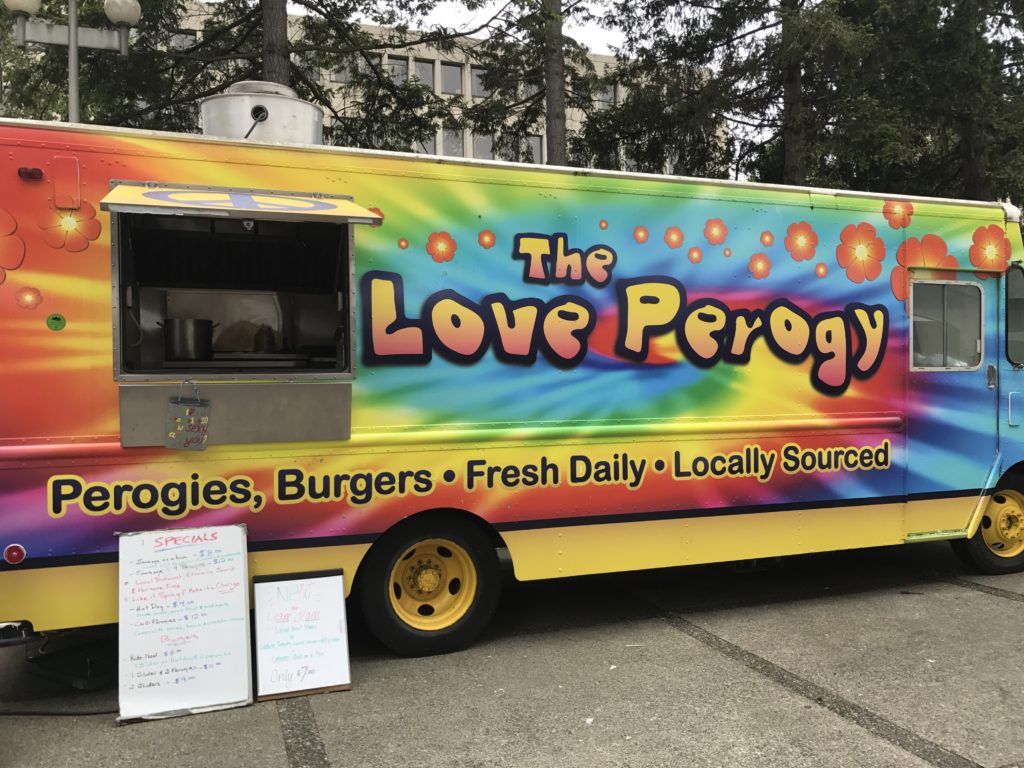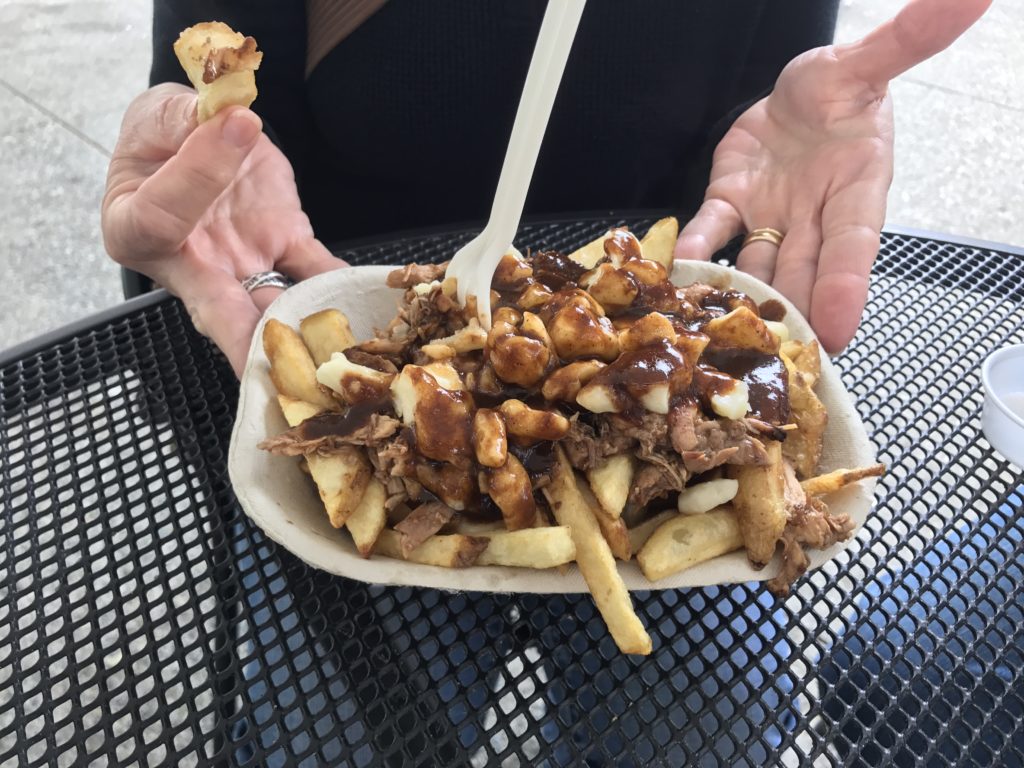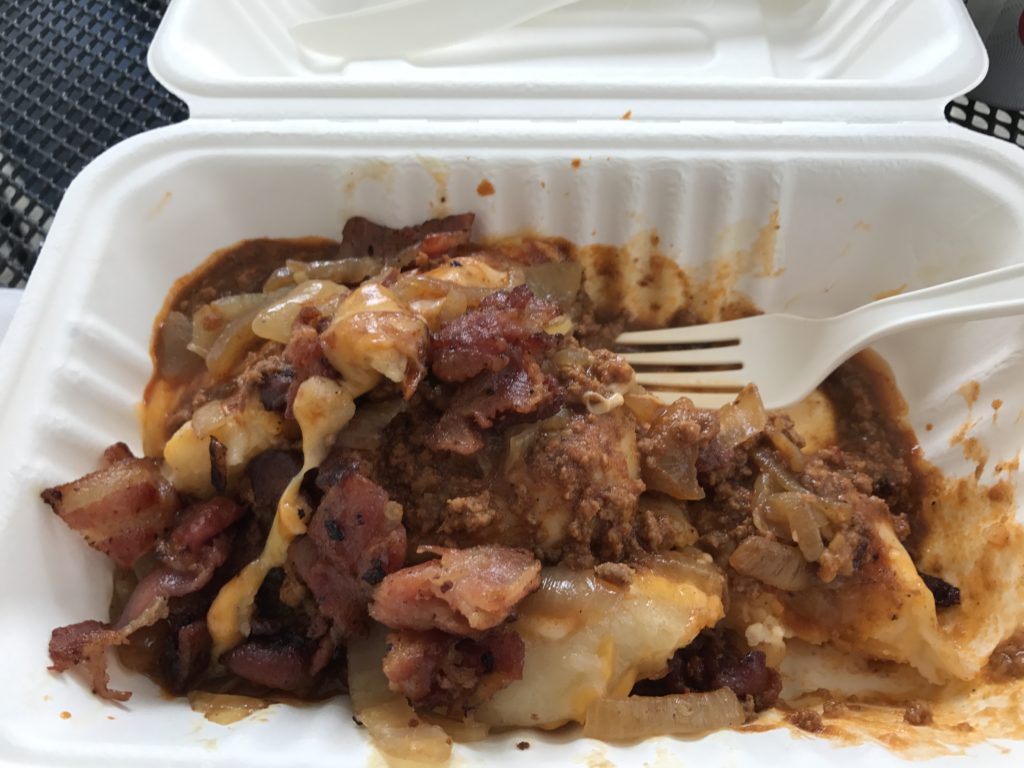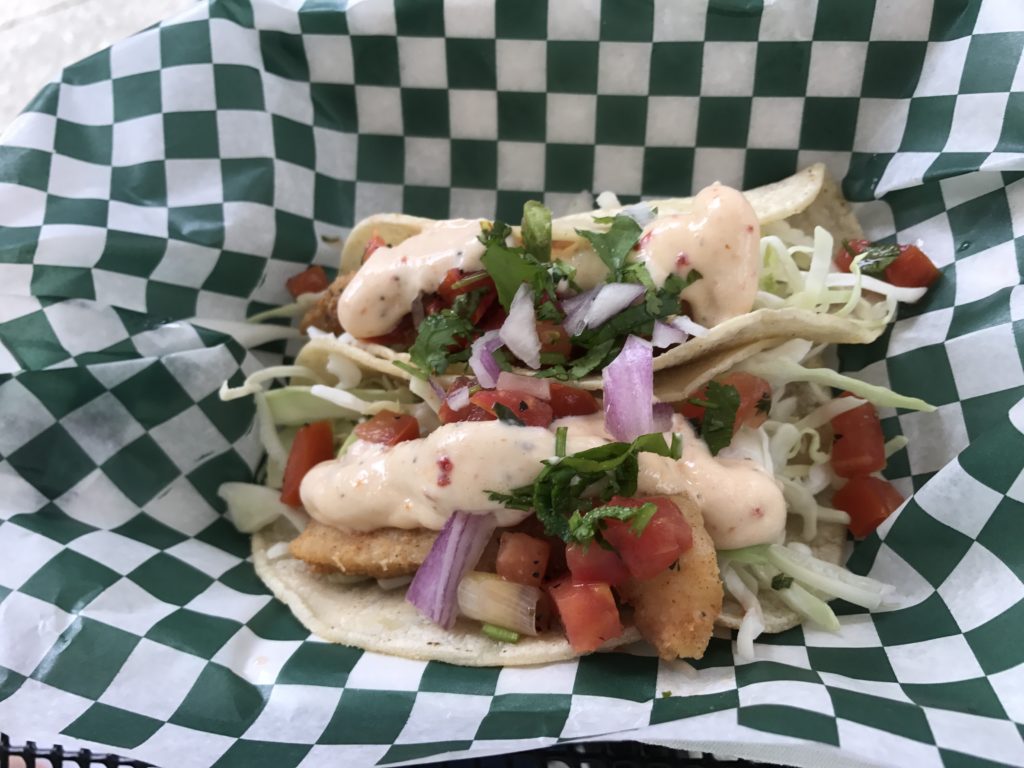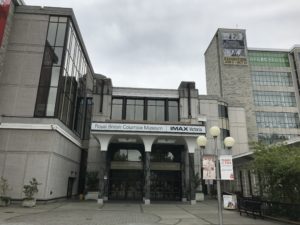 On our second day on Vancouver Island, we decided to visit the Royal British Columbia Museum. The Royal British Columbia Museum is the only natural history museum in the province. It is a huge, three-story building with outlying gardens and an IMAX theater. The museum anchors the Cultural Precinct in Victoria and is located between Inner Harbour, the Empress Hotel, and the Parliament Building.
On our second day on Vancouver Island, we decided to visit the Royal British Columbia Museum. The Royal British Columbia Museum is the only natural history museum in the province. It is a huge, three-story building with outlying gardens and an IMAX theater. The museum anchors the Cultural Precinct in Victoria and is located between Inner Harbour, the Empress Hotel, and the Parliament Building.
The Royal British Columbia Museum was founded in 1886 to preserve British Columbia’s cultural uniqueness. The museum includes three permanent galleries: natural history, modern history, and local First Nations’ (Native American) history. The museum’s collections have about 7 million objects, including natural history specimens, artifacts, and archival records. The museum also hosts touring exhibits.
The first floor of the Royal British Columbia Museum contains the gift shop, the IMAX theater, a snack shop, and a lecture hall. The second floor has space for a feature exhibit and the natural history gallery. The third floor houses the living languages exhibit and the First Peoples gallery.
We went to the museum with Johnny and Val and each of us had our favorite part. We had a hard time getting Val out of the “Family Bonds and Belonging” featured exhibit. As a seamstress, she loved the displays of clothing representing different eras and cultural backgrounds of British Columbian residents.
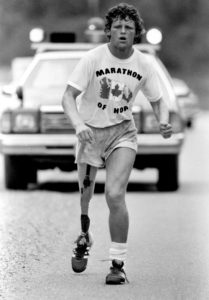 I was fascinated by the “Terry Fox” traveling exhibit. Terry Fox was diagnosed with cancer when he was 18, in 1976, and had a leg amputated. Believing that he defeated the cancer with the amputation and chemotherapy, Terry decided to run across Canada to raise money for cancer research. His goal was one million dollars. Terry started in St. John’s Newfoundland on April 12, 1980, and averaged 25 miles a day for the next 143 days. 3,349 miles into his journey Terry became too sick to continue. His cancer had metastasized to his lungs and he would die before he could complete the run. But his “Marathon of Hope” raised 23.4 million dollars for cancer research.
I was fascinated by the “Terry Fox” traveling exhibit. Terry Fox was diagnosed with cancer when he was 18, in 1976, and had a leg amputated. Believing that he defeated the cancer with the amputation and chemotherapy, Terry decided to run across Canada to raise money for cancer research. His goal was one million dollars. Terry started in St. John’s Newfoundland on April 12, 1980, and averaged 25 miles a day for the next 143 days. 3,349 miles into his journey Terry became too sick to continue. His cancer had metastasized to his lungs and he would die before he could complete the run. But his “Marathon of Hope” raised 23.4 million dollars for cancer research.
Tom’s favorite exhibit was the “Living Languages” which examines how First Nations are preserving and enriching their languages. British Columbia’s First Nations people speak 34 distinct languages, making British Columbia a linguistic hot spot. The exhibit examines the power of language and how it molds cultures that endure. In 2015 the Royal British Columbia Museum won the “American Alliance of Museums Excellence in Exhibition” Competition for “Living Languages.”
Johnny spent most of his time looking at the variety of hunting tools used by First Nations people from the ice age to the present time. During the ice age British Columbia was connected to Russia and the earliest hunters could bring down mammoths and saber-toothed tigers. The hunting tools ranged from sharp sticks to elaborate throwing machines and fishing nets.
Looking at all the museum exhibits made us hungry so we headed out to the Food Truck Court for some lunch. The variety of food trucks represented all the provincial diversity embraced by the museum. After a fortifying lunch we browsed in the excellent gift shop and explored the outside exhibits. We listened to the Netherlands Carillon and walked through Thunderbird Park, enjoying a variety of totems.
The four of us expected to spend two or three hours at the Royal British Columbia Museum and, instead, spent close to five. We could have stayed much longer, but there are a few other things to see in Victoria. If we go again, we will watch an IMAX movie and spend more time in the area that contained the British Columbian history. The Royal BC Museum is definitely worth a visit if you go to Victoria.

